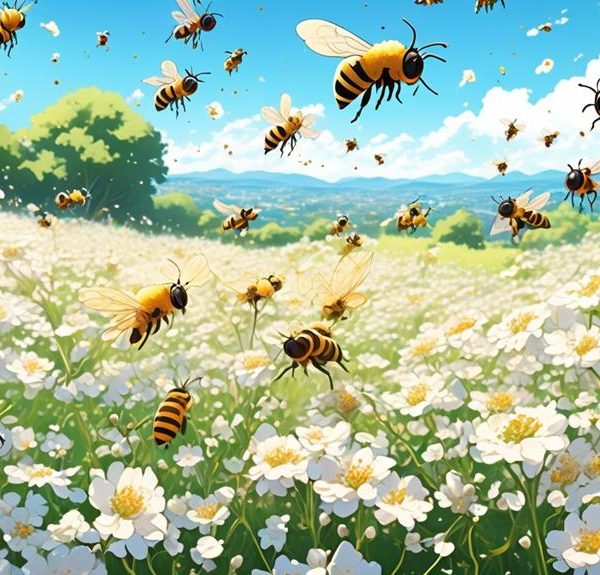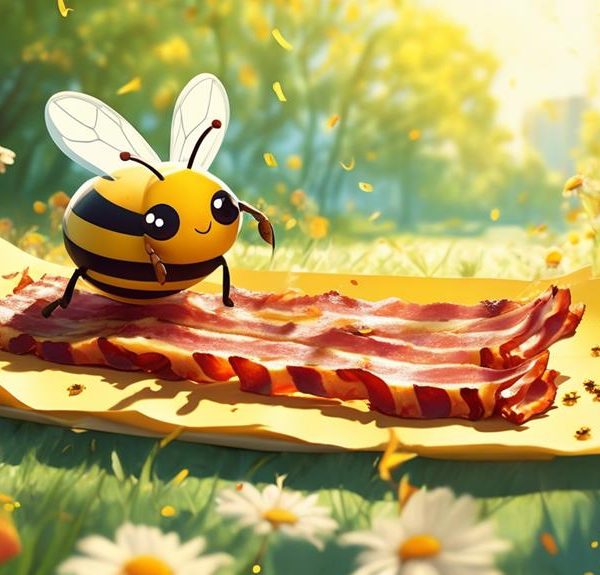Gain fascinating insights into the intriguing relationship between bees and bachelor buttons in your garden, an understanding that might surprise you.
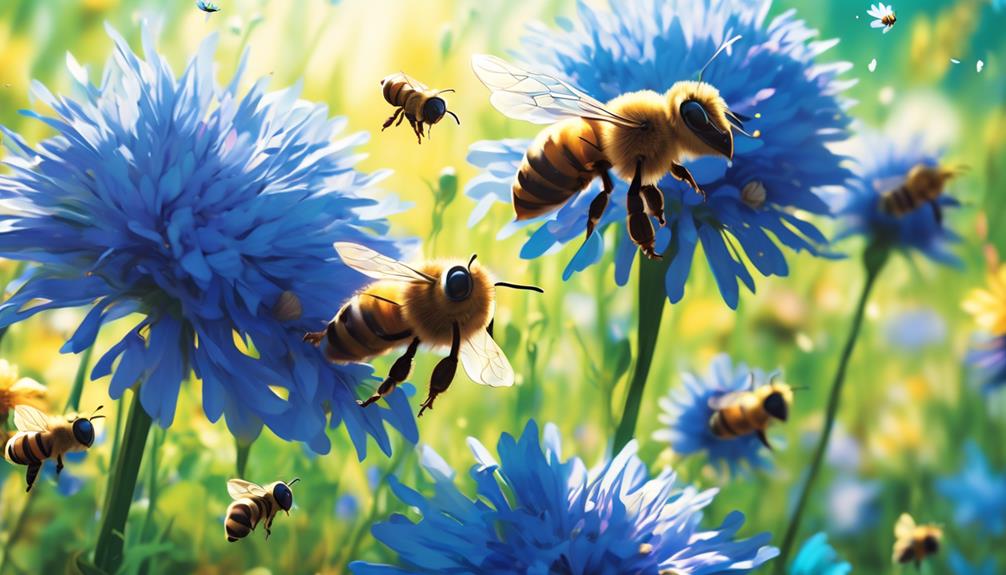
Do Bees Like Bachelor Buttons
Just like a kid in a candy store, you've probably noticed bees buzzing with seeming joy around certain flowers in your garden. But have you ever stopped to wonder whether bachelor buttons are among their favorite treats?
Bees play a vital role in our ecosystem, and understanding their preferences can help us cultivate gardens that support their survival. We're going to take a closer look at the relationship between bees and bachelor buttons, exploring whether this classic garden flower is as irresistible to bees as it is to human admirers.
Stick around, because the answer might surprise you.
Key Takeaways
- Bees are attracted to flowers with bright colors, particularly blue and yellow.
- Bees prefer flowers with sweet, strong scents.
- Bachelor Buttons have unique characteristics that align with bee preferences, such as their vibrant blue color and open, flat shape.
- Incorporating Bachelor Buttons in your garden can attract bees and provide them with essential nectar and pollen, benefiting both the bees and your garden's productivity.
Understanding Bee Preferences
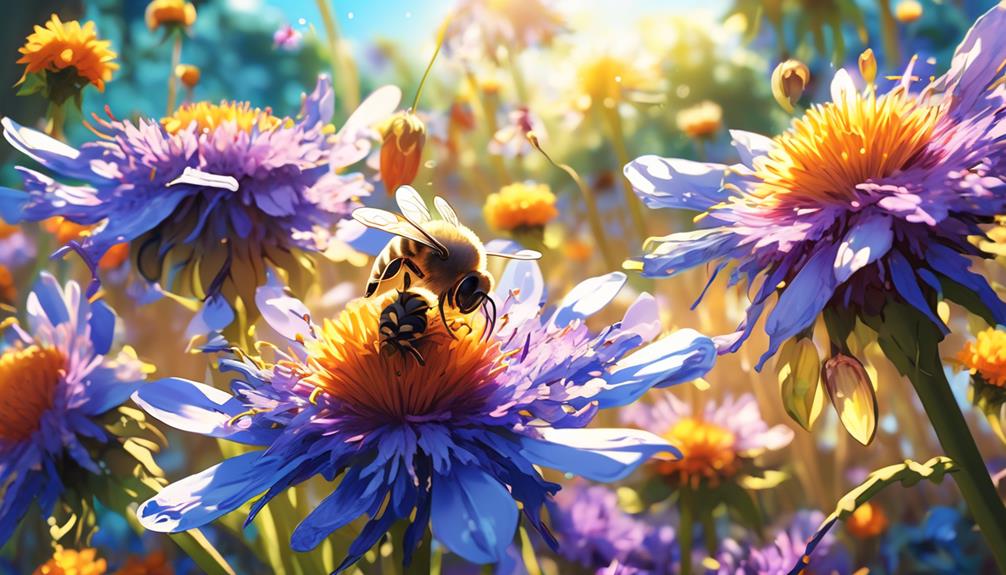
While you may think that all flowers are created equal in the eyes of bees, it's important to note that these industrious insects do have distinct preferences when it comes to their nectar sources. Bees aren't just indiscriminate flower-visitors; they're surprisingly selective. Scientific observations reveal that they've a propensity towards certain types of flowers, such as those with bright colors, particularly blue and yellow, and sweet, strong scents.
Your understanding of these preferences is critical to any gardening or conservation efforts. Bees are attracted to plants with large amounts of nectar and pollen, which provide essential nutrients for their survival and reproduction. They're also drawn to plants that produce these resources consistently throughout the blooming period.
The shape and structure of the flower can also influence bee preferences. Bees tend to favor flowers with a landing platform where they can rest while gathering nectar. For instance, the flat, open petals of the Bachelor Button make it an attractive choice for bees.
Unraveling Bachelor Button Appeal
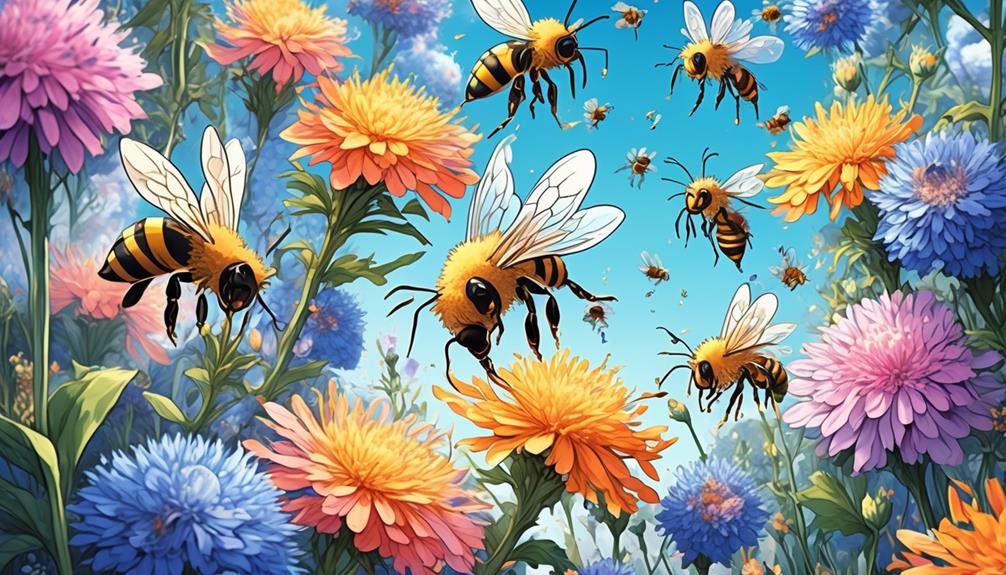
If you've ever pondered why bees are particularly fond of Bachelor Buttons, it's largely due to the flower's unique characteristics that align with their preferences. Bachelor Buttons, also known as Cornflowers, have evolved to be particularly appealing to bees.
Their vibrant blue colour, a rarity in the flower world, acts as a strong visual cue for bees. Bees can see ultraviolet light, and blue flowers stand out starkly against the green foliage, effectively acting as a beacon for bees.
Moreover, the flower's radial symmetry, where the petals evenly surround the central disk, is especially attractive to bees. This is because bees are drawn to symmetrical patterns, which signal a rich nectar source. Additionally, the open, flat shape of Bachelor Buttons makes it easy for the bees to land and access the nectar, making the flower a convenient food source.
Lastly, the abundant pollen provided by Bachelor Buttons is a major lure. Bees require pollen for protein, making these flowers an invaluable resource.
In essence, Bachelor Buttons offer a perfect blend of visual appeal, easy access, and nutritional value that bees find irresistible.
Investigating Bee-Flower Interactions
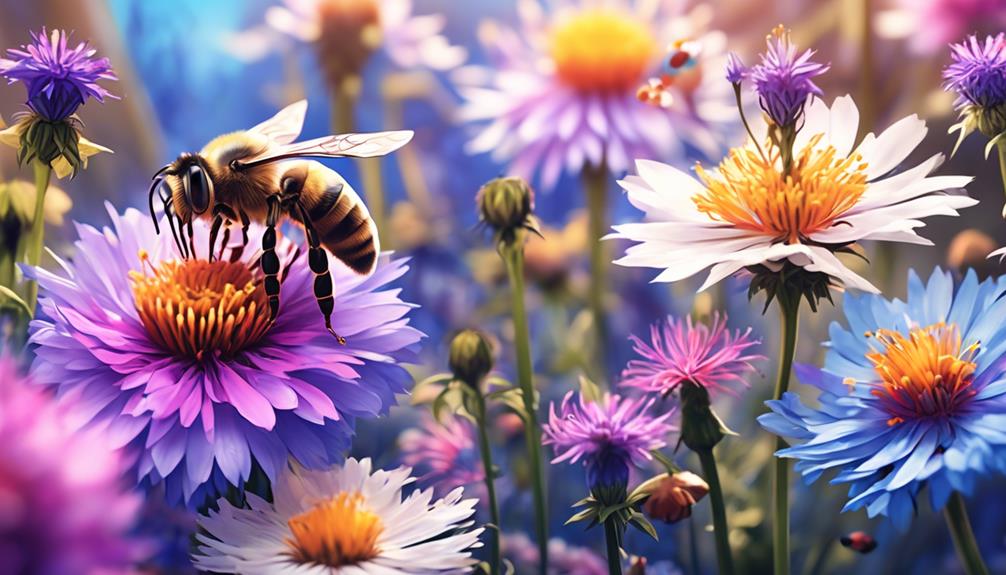
To understand the fascinating dynamics of bee-flower interactions, let's delve deeper into the science behind how these industrious insects locate and select flowers like the Bachelor Buttons for their nectar and pollen needs. Bees aren't random in their flower choices. They're guided by a complex interplay of visual, olfactory, and tactile cues.
Visual cues, such as color and pattern, are crucial. Bees see the world differently than you do. They're more sensitive to the blue and ultraviolet end of the spectrum. Bachelor Buttons' vibrant blue hues and contrasting patterns are likely to stand out for them.
Olfactory cues are equally important. Bees have an acute sense of smell. They're drawn to specific scents that signify a flower's nectar and pollen availability. Bachelor Buttons emit a sweet, subtle fragrance that's thought to be irresistible to bees.
Tactile cues come into play too. Bees favor flowers that provide a landing platform, and the cup-shaped Bachelor Buttons fit the bill.
In this intricate dance between bees and flowers, Bachelor Buttons seem to have all the right moves. Their visual, olfactory, and tactile appeal might explain why they're a bee favorite. But remember, this is a multi-layered interaction. More research is needed to fully understand it.
Role of Color and Fragrance
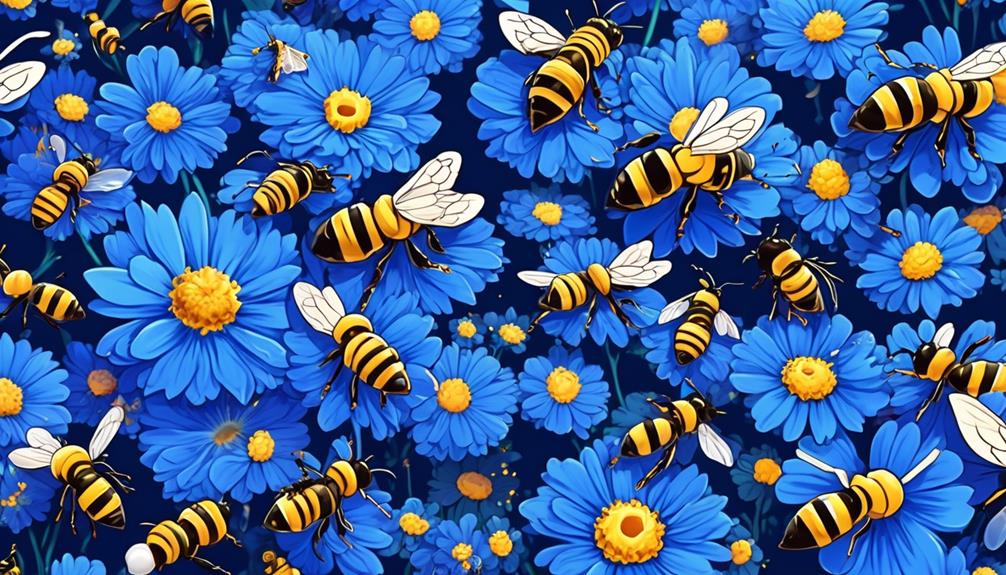
How significant are color and fragrance in attracting bees to flowers like the Bachelor Buttons? Quite significant, in fact. Bees, as you might know, have a keen sense of color perception. They're attracted to certain hues more than others, primarily those on the blue and yellow spectrum. Bachelor Buttons, with their vibrant blue petals, are a perfect example of this attraction.
However, it's not just color that lures these pollinators. Fragrance plays a crucial role too. Bees possess an exceptional olfactory sense. They can detect and distinguish between a wide array of floral scents. And they often associate specific fragrances with nectar-rich flowers. The sweet, mild aroma of the Bachelor Buttons is a powerful attractant for bees.
In essence, the interplay of color and fragrance is a strategic mechanism employed by flowers like the Bachelor Buttons to attract bees for pollination. It's a fascinating example of nature's complex and finely tuned systems. By understanding these factors, you can optimize your garden to be more bee-friendly, thereby contributing to a healthier ecosystem.
Implications for Gardeners

Understanding the attractiveness of Bachelor Buttons to bees offers numerous implications for you as a gardener, potentially enhancing your garden's appeal to these crucial pollinators. If you're seeking to boost the bee population in your garden, incorporating Bachelor Buttons is an effective strategy. These flowers not only attract bees but also provide them with essential nectar and pollen, contributing to their overall health and productivity.
Bachelor Buttons are low-maintenance, resilient, and drought-tolerant, making them a practical choice for various garden conditions. With their vivid colors and inviting fragrances, they can significantly improve your garden's aesthetics while promoting bee activity.
Knowing bees' preference for Bachelor Buttons, you can strategically place them near plants that need pollination. This can help improve the productivity of your vegetable and fruit plants, directly impacting your garden's yield. You're also playing a part in sustaining the bee population, which is crucial for broader environmental balance.
Frequently Asked Questions
What Other Flowers Are Bees Typically Attracted to Besides Bachelor Buttons?
You're curious about what other flowers bees are typically attracted to, aren't you?
Well, bees tend to favor bright, fragrant flowers that produce plenty of nectar. They're particularly fond of lavender, cosmos, sunflowers, and zinnias.
They're also attracted to many herbs, like oregano and mint.
This diversity not only provides a food source for the bees, but also helps to pollinate these plants, supporting a thriving ecosystem.
Are There Specific Species of Bees That Prefer Bachelor Buttons?
Yes, there are specific species of bees that prefer bachelor buttons. Honeybees and native bees, like bumblebees, are especially attracted to them. They're drawn to the vibrant colors and the abundant nectar these flowers provide.
Does the Climate or Region Impact Bees' Attraction to Bachelor Buttons?
Yes, climate or region can impact a bee's attraction to bachelor buttons. In warmer climates, these flowers bloom longer, providing more nectar and pollen. Bees are more likely to frequent plants with longer blooming periods.
However, if you're in a colder region, don't worry! Bees still visit bachelor buttons, they're just less frequent due to shorter blooming periods.
Can Bachelor Buttons Attract Other Pollinators Besides Bees?
Yes, bachelor buttons can attract other pollinators besides bees. You'll often see butterflies, hummingbirds, and even beetles visiting these flowers. They're drawn to the vibrant colors, sweet nectar, and plentiful pollen.
However, their attraction can depend on the specific species of pollinator and their individual preferences.
It's not just bees that love bachelor buttons, so you're helping a range of pollinators by planting these in your garden.
Are There Any Negative Impacts on Bees From Feeding on Bachelor Buttons?
You're wondering if there are any negative impacts on bees from feeding on bachelor buttons. Well, there's no evidence to suggest any harmful effects.
Bachelor buttons are, in fact, quite beneficial. They're packed with pollen and nectar, providing bees with a rich source of nourishment. They also bloom for extended periods, offering bees a reliable food source.
Conclusion
In conclusion, bees do indeed love bachelor buttons. The flower's vibrant hues and enticing fragrance attract these pollinators. Your garden's bee-flower interaction will be boosted with the addition of these flowers.
So, if you're aiming to support our bee population, planting bachelor buttons is a smart move. Remember, a bee-friendly garden isn't just beneficial for bees, but for your plants and the wider ecosystem too.

